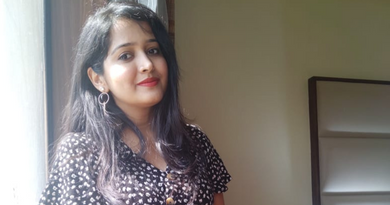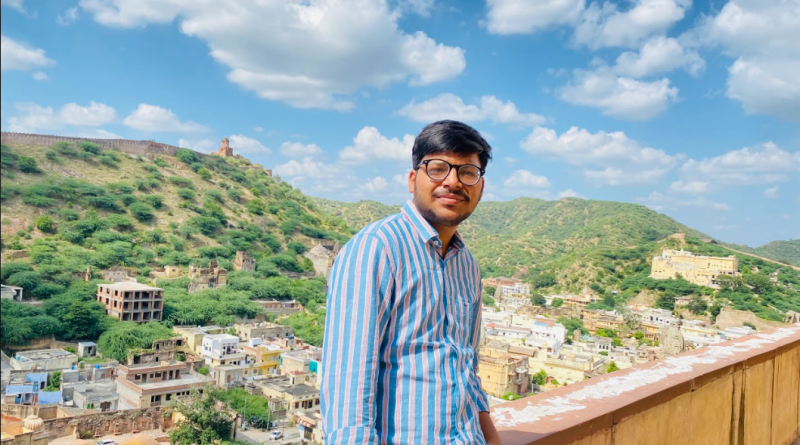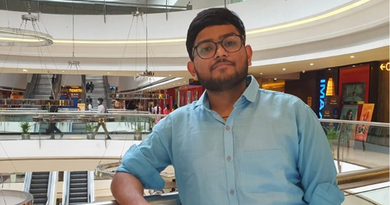Internship with WWF India – a chance to be amidst picturesque landscapes and exquisite creatures
 About Author: Neelima Mishra, a final year MBA student at Indian Institute of Forest Management interned with World Wide Fund – India in Western Arunachal Pradesh.
About Author: Neelima Mishra, a final year MBA student at Indian Institute of Forest Management interned with World Wide Fund – India in Western Arunachal Pradesh.
The start to my internship with WWF-India (Western Arunachal Landscape) at Tezpur, Assam couldn’t have been more adventurous with the 2nd leg of my flight journey from Kolkata to Tezpur via Silchar being cancelled at Silchar. After a round of negotiations with the airport authorities, we were sent back to Kolkata and were boarded on a flight to Guwahati via Imphal. It seemed I would be touching upon all the seven sisters of NE before even reaching my final destination. However, on reaching Guwahati, a road journey to Tezpur, another 180km away awaited with some interesting co-passengers. So finally after a tiring travel I did manage to reach my destination at around 12 midnight when I was expected to reach at around 8 in the morning. But there is an old Himalayan proverb – “Nothing in the world that is worth having…. comes easy to you.” And this was just the beginning to a beautiful experience.
I had jumped at the prospect of working with WWF for quite a many reasons. Having worked in a software company for 4 years prior to joining IIFM I was well versed with a corporate environment and I wasn’t quite sure what to expect at the WWF-Western Arunachal Landscape (WAL) office at Tezpur, Assam. WWF being the world’s leading conservation organization has its presence in diverse activities in the field of nature protection such as education capacity building, policy advocacy, field projects in bio diversity etc which involves the action of the local communities such that the needs of both nature and people are met .
My internship project involved assessing and documenting the traditional grazing practices of the local Monpa community in Zemithang, Tawang District of Arunachal Pradesh and its impact on herbs and shrub diversity and biomass in the winter grazing area sites. Getting the opportunity to travel to a part of India, a village that shares its boundaries with Bhutan and China was definitely challenging and exciting and I took up the project with no further hesitation. The community that I dealt with was the Monpa tribe, one of the indigenous tribes of the state comprising around 5% of the population and inhabiting the higher altitudinal range (10000-15000 ft) in Tawang & West Kameng districts. Agriculture and livestock husbandry especially yak, sheep, cows and its cross breeds plays an important role in the traditional livelihood of the community.
Some interesting experiences while on the way to the field location that will live with me forever are :
Reaching Sela Pass – It is the world’s 2nd highest motorable pass at 13,700 feet. This was the first time ever in my 26 years of existence that I had seen and felt snow. It was a double bonus when the wind suddenly picked up and snowflakes started falling. The experience was way too beautiful to even describe in word! In spite of the layers of winter clothing, the chill at Sela Pass seemed to penetrate through ones bones. The sparse tea-shops beckoned and it was here that we had some hot noodles and steaming tea by the wooden stove and it filled us with warmth.
At the Paradise Lake, we spotted 18 Ruddy Shelducks (migratory birds of the duck, goose and swan family) which was a unique encounter in itself again. All along the ongoing journey, I was exposed to the scenic beauty which was like a visual treat strewn for us to savor all along. The hairpin bends, the whiffs of clouds drifting in the valley, the shimmering brooks, the snow covered mountain tops …. everything was dream like. On the field, life wasn’t particularly easy. One was expected to complete work by 12 noon because there were rains thereon and the field hence was not at all conducive for carrying out further study. The weather can be finicky and it can turn from nice and sunny to super wet and cold in minutes, without warning. We were absolutely dependent on the sparing electricity even for the phone network, forget connectivity by Internet. No electricity meant no phone calls to any of your family members because of the single BSNL phone tower. Those few days when one actually got to speak to your loved ones would bring tears to your eyes just informing that you are all safe and sound.
The temperatures run so low that the villagers keep their taps running at night lest the water freezes and taking a bath when only the sun shines and we followed the Monpas in this regard generously. Red, blue and black boots were a common sight there amongst the villagers and I preferred the blue ones as I carried out my survey there at the grazing grounds to help protect myself from the leaches and the muddy soil. To reach the field I had to daily cross a creaking wooden bridge with the waters of the Namjang Chu flowing below and colourful prayer flags alongside the bridges. It was here that the endangered black necked cranes were also photographed by Lham Tsering Sir- field officer at WWF, last year. These birds, locally known as Dhung Dhung Karma are believed to be an embodiment of the 6th Dalai Lama by the Tibetan Buddhists and are revered by the Monpas. These rare birds are found in India, China and Bhutan and breed in high-altitude wetlands of the Tibetan plateau was spotted for the first time here at Zemithang.
WWF has been doing a great work in this regard by setting up camp stays and home-stays for tourists, training the local youth as guides and through community initiatives helping the people to promote eco-tourism. The Monpa people are very fond of their butter tea, consisting of butter/milk, tea, salt and for an extra flavor dried leaves of the Zshatok tree are used. When I was first offered, I was asked to erase all previous memories of the “Camelia sinensis” tea in my mind and though it did not help much, I realized that it is definitely an acquired taste. I took my first sip of the Yak butter tea, lovingly offered by our neighbors – slightly rancid and smelly and I could not venture a second sip. The people consume it as it energizes them to move about in the hilly terrain. During the last few days of the fieldwork, when we entered into moderately dense grassland to carry out our study, my field guides Urgen, Dorjee Sir and Lotte Ji helped gather some wild gelatinous mushrooms from the barks of the trees, helping me differentiate it from the inedible ones at every step and on returning to the campsite we sorted it from the worms before cooking it up with lettuce leaves. It was indeed a delight.
Noted for their religious fervor, the villages have richly decorated Buddhist locally called ‘Gompas’. One such is the Chorten Gorsam which is the largest religious monument in the area, white and unusually shaped. The folktale goes that the Monpa who supposedly built this Gumpa, carved a miniature version of Kathmandu’s famous Swambhunath Stupa on a radish, but the radish shriveled while returning to Zemithang and hence the unshapely structure. The reason for building it was to get rid of evil spirits and it seems so by the four eyes of the “all seeing Buddha” painted atop the Gompa keeping a vigil in all the four directions. I did a lot of bird-watching and Arunachal is a treat for nature-lovers with its rich biodiversity of flora and fauna. We were also given generous inputs on the various Rhododendron species by my reporting officer. Also while carrying out my study, my field guide and I did keep a look out for the Red Panda, locally known as Thungmo, but elusive as this reddish orange rare beauty is we did not get an opportunity.
I have realized that my experience of spending a few days among the Monpa tribe was a precious memory that I would carry back with me. Right at the top of the North-Eastern India lies such a pristine place – one of the least traveled and most compelling holiday destinations with its picturesque mountain peaks, valleys, gurgling rivers, and a land whose soil is first kissed by the early rays of the sun. Hereby, I thank my reporting officer, Pijush Dutta Sir for giving me this opportunity to work on such a challenging project at such a location and the rest of the team members for supporting me throughout this phase. I truly look forward to visiting this place again. The Buddha had truly smiled at me.
If you too have had any interesting internship experiences (in India or abroad) and would like to share it with all of us, please submit your entries here.



